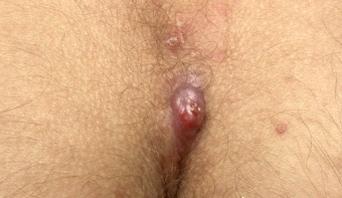What Is Pilonidal Sinus?
A Pilonidal sinus (PNS) is a strange looking small hole that usually develops in the cleft of the buttocks. The hole may multiply and is connected by tunnels under the skin.
Some people thought that sinus only occurs in the nose, but sinuses can appear anywhere in the body. Men are more susceptible to this disease particularly those who sit most of the time like cab drivers.
The term sinus is a medical term use to describe the occurrence of the disease in a channel or cavity form. Sometimes you will not know right away that you have the disease since it does not show any noticeable symptoms unless it becomes infected. It can develop into a pus-filled abscess. (1)
Symptoms
The PNS may also develop between fingers or on the belly button. In some instances, there is more than one hole. Once the sinus is infected, a pus-filled abscess may develop. An abscess is a painful accumulation of pus that may cause the following symptoms:
- Fever or body temperature of 38C or higher, but this is not common
- A tender lump under the skin
- Blood coming out from the sinus
- Pain
- Unpleasant smell and pus coming out from the sinus
- Redness of the skin
These symptoms may occur quickly, usually over a few days. The pain you will experience can be severe and may worsen if left untreated. You might have difficulties in sitting or lying dying, which may affect your sleep. Your work and daily activities can be affected because of the pain. (1,2)
Causes
The exact cause of this disease is not known, but some medical experts believed that the following are the common cause of PNS:
- Change in hormones that take place after puberty
- Hair growth on the affected part
- Friction from fabrics
- Sitting for a long time.
The hair growing in that area are being pushed back under the skin during prolong sitting. The body treat the hair foreign and causes an immune response against it, just like how it reacts if you have a splinter. The immune response produces the cyst around the hair. (1,2)
Who are Affected with Pilonidal Sinus?

Infected Pilonidal Sinus with Pus
The PNS is rare. It affects only 26 in 100,000 people each year. Men are more susceptible to the disease as compared to women. The average age with pilonidal sinus is 21 in men and 19 in women. The condition is less common in children and adults over the age of 45. (1)
Treatment

1. Traditional Treatment
If you are diagnosed to have a PNS with pain but not swollen, your doctor may prescribe a broad-spectrum antibiotic that treats a wide range of bacteria.
This will not heal the sinus tract, it will provide relief from the discomfort and prevents infection. Follow-up exam may be recommended, regular hair removal on the area is suggested and proper hygiene.
2. Lancing
First, the doctor will give you a local anesthetic. The doctor will open the sinus using a scalpel. Hair, pus, and blood will be removed from the inside of the abscess.
Your physician will place sterile gauze on the opening and allow it to cure of the inside out. It normally takes four weeks for wound to heal and most patients do not require any further treatment.
3. Phenol Injection
The procedure starts by giving you a local anesthetic. Then a chemical compound known as phenol is injected into the cyst. Phenol is used as an antiseptic. The process may need to be done several times again.
This will result in hardening of the lesion and closes. However, the recurrence rate is very high thus it is not used in the United States. In this case, surgery is suggested to treat the condition completely.
4. Surgery
For those with recurring pilonidal sinus or if you have more than one hole, your doctor may suggest that you undergo a surgical procedure.
A local anesthetic will be administered first. Then, the surgeon will make an opening on the lesions to remove the debris and pus. After completing the procedure, the surgeon will stitch the cut closed.
How to Prevent Recurrence after Surgery?
After surgery, your doctor may instruct you to do the following to prevent the recurrence: (3)
- Shave the hair appearing around the wound site
- Use antiseptic lotion and water to clean the wound in the morning and night.
- Replace the dressing if needed.
- Avoid applying pressure on the affected area.
- For overweight, you need to reduce your weight.
- For diabetic, control your diet.
- If possible, leave the wound open as this will help heal it faster.
If left untreated, there is a possibility that you could have skin cancer or squamous cell carcinoma.
References
- http://www.nhs.uk/Conditions/pilonidal-sinus/Pages/Introduction.aspx
- http://www.healthline.com/health/pilonidal-cyst#Overview1
- https://medichere.com/treatment/pilonidal-cyst-recovery-time.html#Symptoms_of_This_Ailment

Hmm it appears like your blog ate my first comment (it was super long)
so I guess I’ll just sum it up what I submitted
and say, I’m thoroughly enjoying your blog. I too am an aspiring blog writer but I’m still new to everything.
Do you have any recommendations for rookie blog
writers? I’d really appreciate it.
Thank you a lot for sharing this with all people you actually realize
what you are talking about! Bookmarked. Kindly also visit my web site =).
We will have a hyperlink alternate agreement between us